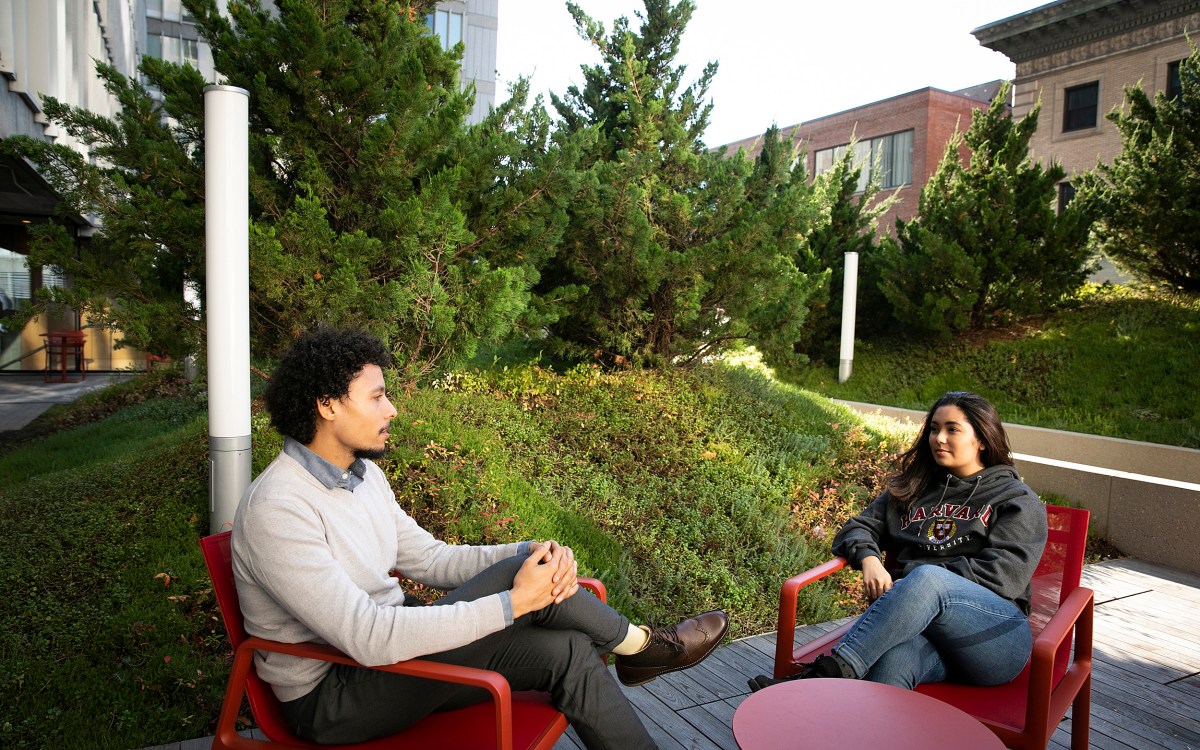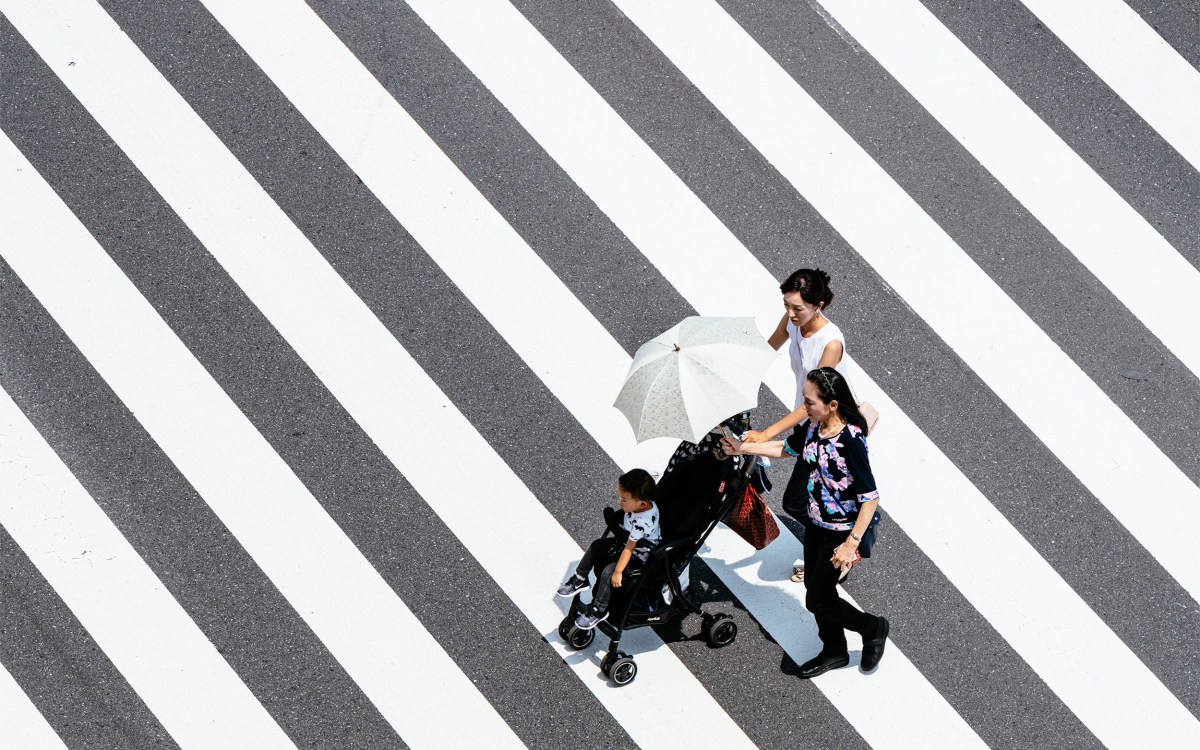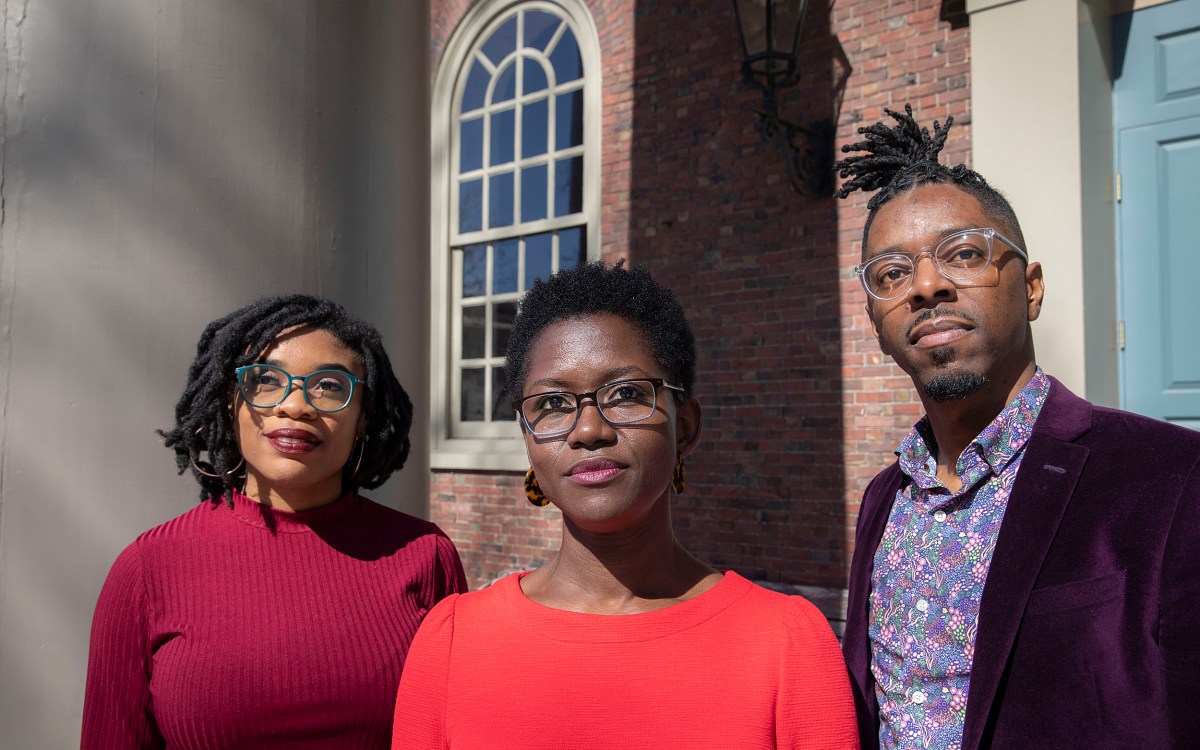Fighting bigotry with art
The Wave started as a pan-Asian literary and arts magazine, but its mission changed with the rise of racism and xenophobia after pandemic
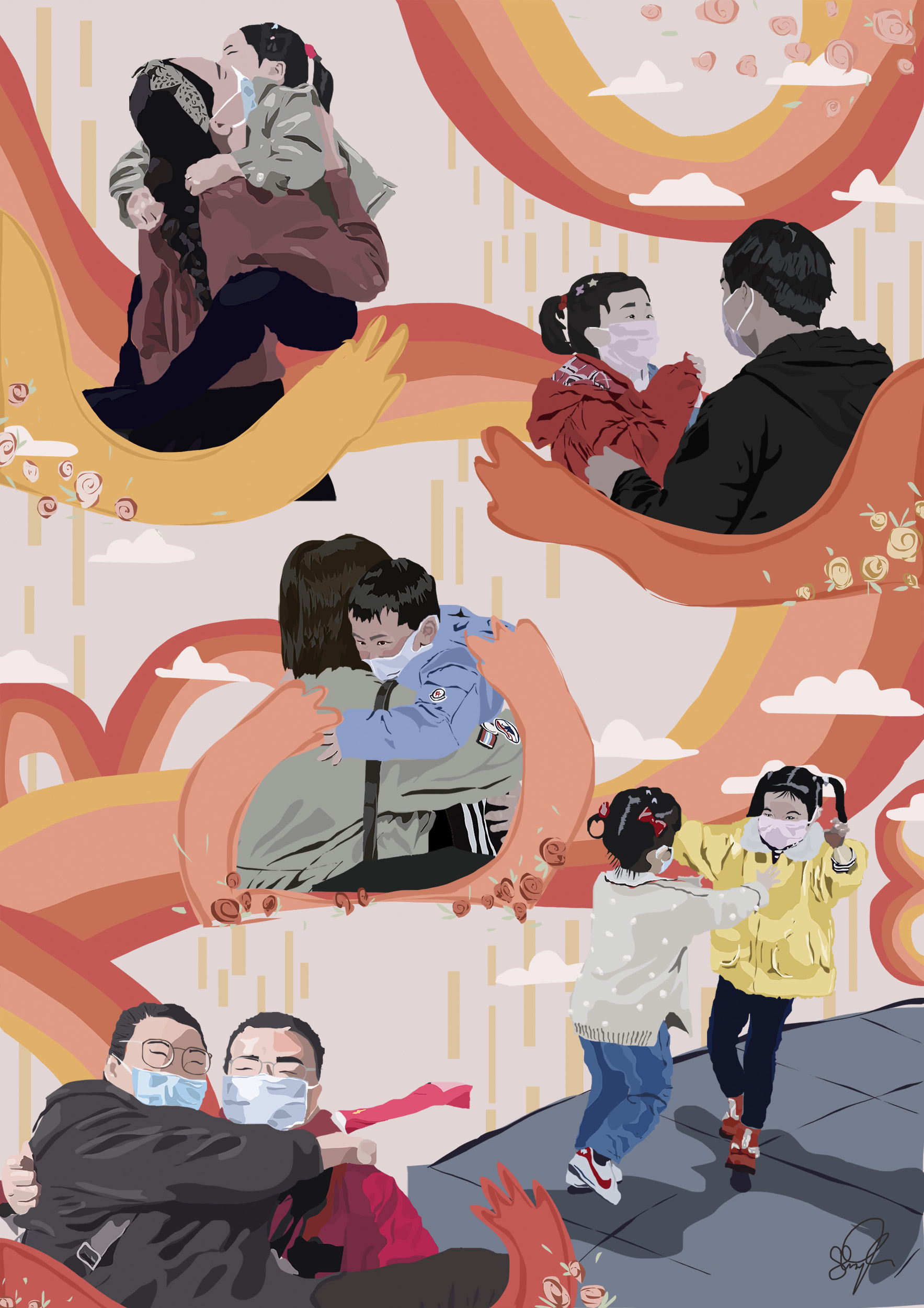
“Reunion Season” by Shirley Chen.
This past spring, Eric Zhou and Jerrica Li launched The Wave, a new, student-run, pan-Asian literary and arts magazine, with the goal of bringing people together to celebrate art and identity. Their mission took on new urgency amid the COVID-19 pandemic, which first emerged in China, and the ensuing rise of anti-Asian racism and xenophobia here and elsewhere in the world.
The Wave’s inaugural print issue was released in February. Since leaving campus, Zhou ’20, Li ’21, and the nine other members of The Wave’s editorial board started a project that launched in May: a digital “Quaranzine” that aims to combat the mounting bigotry by showcasing young Asian voices in art, videos, and writing on an ongoing basis.
“Xenophobia is a phenomenon often far more deeply rooted and far more complex than a couple of incidents that we see on the news or social media,” said Zhou, who is from Ashland, Mass., and graduated with an A.B. in English. “The kind of real empathy that art demands of both creator and viewer naturally combats xenophobia, but it also gives voice to truth and to feeling. Even in times of scarcity and isolation … art continually reminds us that there is more to our own individual lives than the daily operations of business and survival.”
Li and Zhou found solace in their own writing and artmaking once they returned home, and they thought others might feel a similar drive to create. They also wanted to maintain and expand the community of artists that had come together for The Wave’s first print issue earlier in the semester.
The editors solicited submissions between May and July and have posted about one piece per week since the project began, pausing for the month of June to support Black Lives Matter by featuring Black artists. The group plans to publish the entire collection of Quaranzine pieces in a digital volume next month.
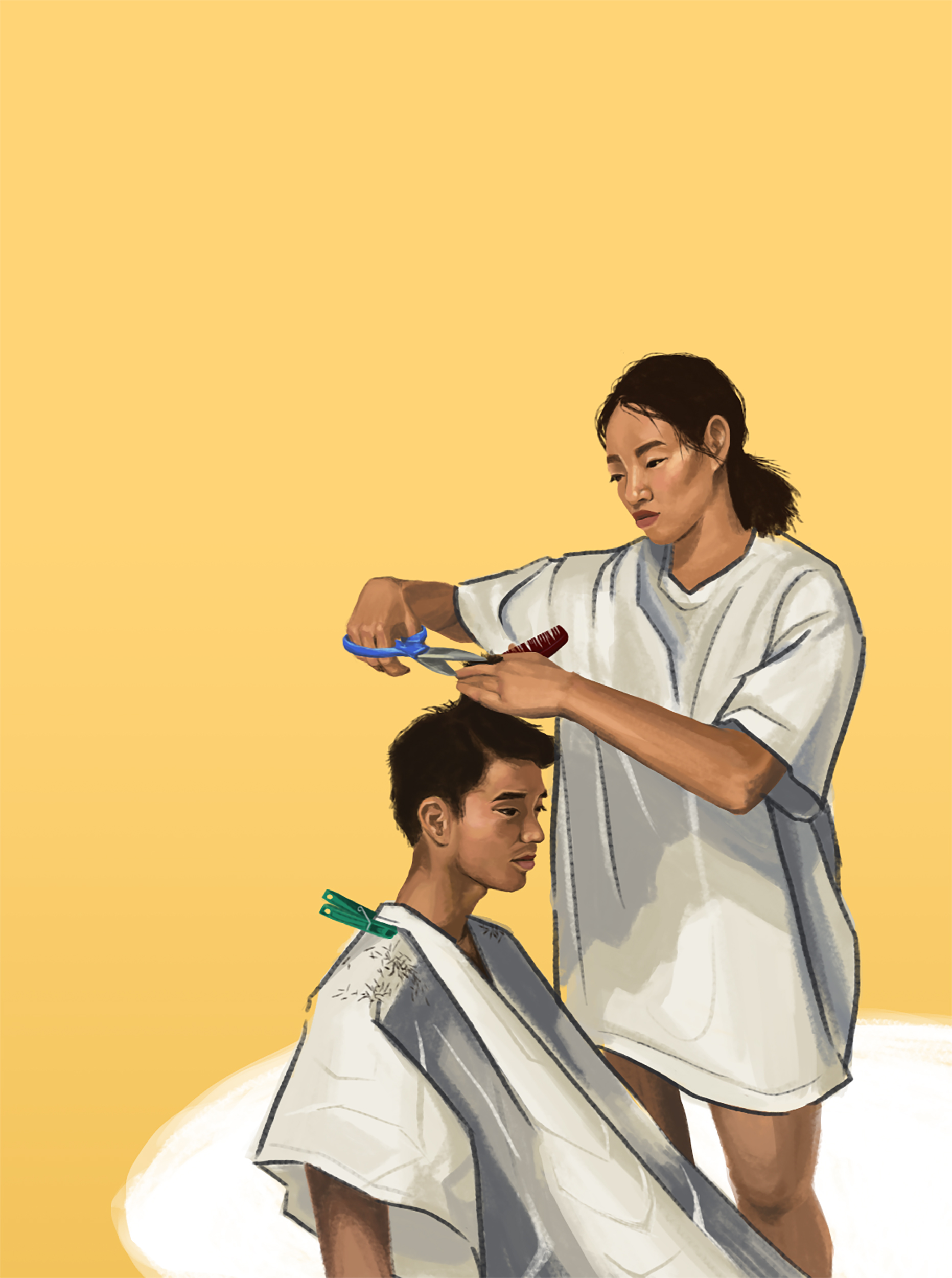
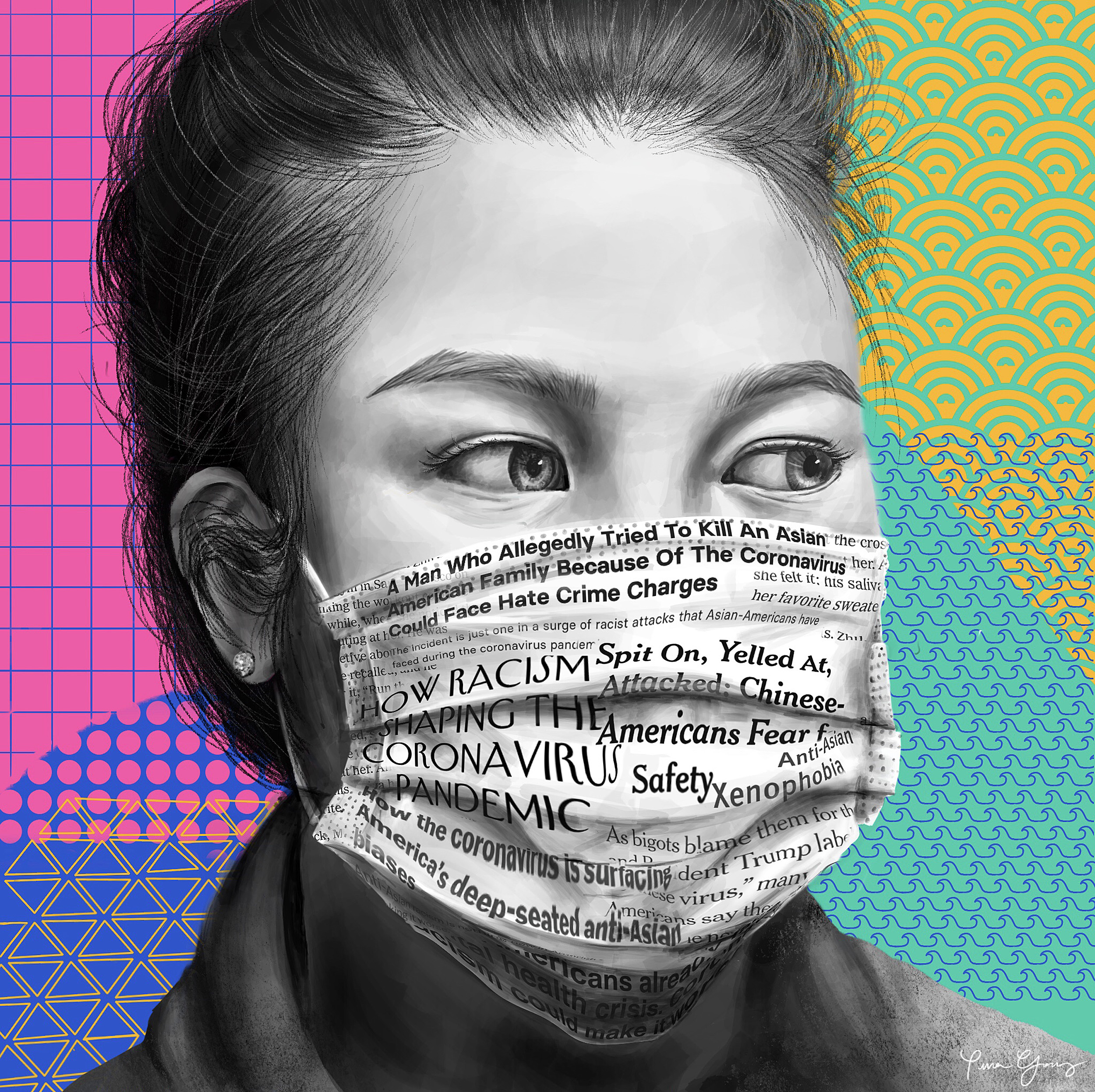
“Acts of Service” by Emily Hong and “Coronavirus’s Unearthing of Anti Asian Racism” by Tina Gong.
Some of the pieces published in the Quaranzine included the poem “pause button” by rising sophomore Yooni Park about life in quarantine, a photography series of at-home life during COVID-19 by Payton Kim ’23 called “Life as We Know It,” and “Masked Celebration,” a watercolor painting of Chinese New Year festivities in London during the pandemic submitted by incoming first-year Erik Zou.
“[The Wave] is for those kinds of people” who may be intimidated by other literary spaces on campus, said Li, a comparative literature concentrator from Longmeadow, Mass. “[It’s not for] the person who shouts the loudest, but the multitude of voices that make up the nuanced, real student voices on campus that want to be heard the way they want to be heard and want to listen in safe spaces.”
The idea for The Wave was first floated by the Harvard College Asian Student Arts Project (ASAP), founded in 2018. Zhou volunteered to run the project and started envisioning the first issue in spring 2019, and Li came on board that summer after returning from a gap year.
The name of the publication rejects negative stereotypes about “waves” of immigration and embraces of a new kind of creative movement. In their editor’s note in the first issue, Zhou and Li wrote: “We are a flourishing movement creating art that speaks to our age, our race, our histories and our communities in the here and now… Our wave is not one monolithic force; it is made strong by individual voices giving their truths.”
Those guiding principles were the product of some deliberation. Li recalled that before embarking on the project, “It was just Eric and I sitting in a room and asking questions like ‘Should this exist? Can we do this together? If we can, are we the ones to do it? How do we move forward?’
The Wave founders, Jerrica Li ’21 and Eric Zhou ’20.
Photo by Aaron Ye
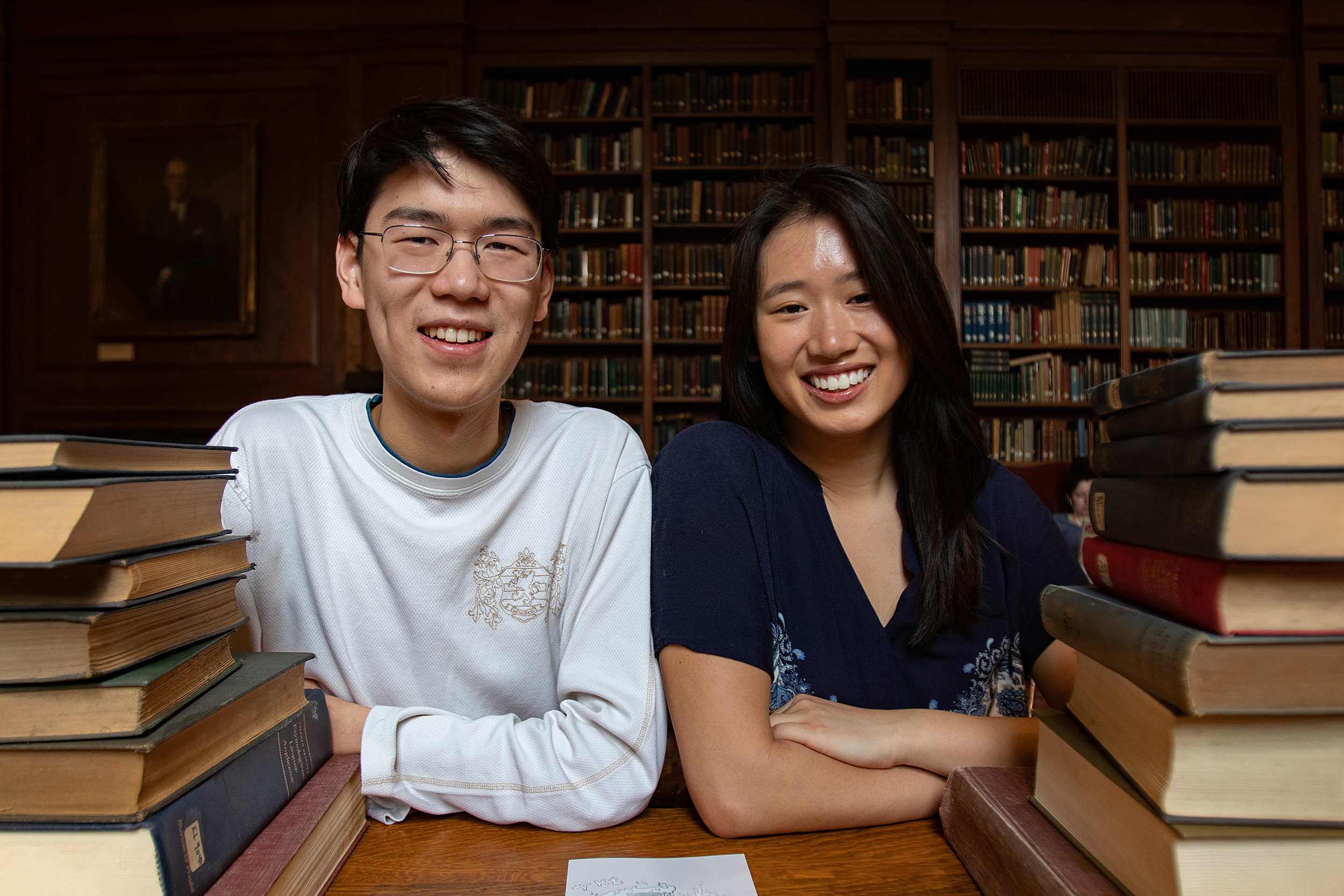
“We had to double and triple our resolve and really push, [because] we became very passionate that The Wave was something that should exist and, despite the barriers, we would see this through.”
Besides the help of the other editors, the two sought guidance for the project from Ju Yon Kim, professor of English and faculty adviser for The Wave, and Eleanor Craig, administrative and program director and lecturer for the Committee on Ethnicity, Migration, Rights, and representatives from the Asia Center and ASAP.
“We have a lean and scrappy team, and every person did so much toward contributing to the overall vision of the magazine,” said Zhou, noting that many on the masthead, including himself, had not worked in editing or publishing before. They learned how to edit, design, and raise funds for the 50-page magazine and website as a group.
“This [energy] came from people who wanted to do this regardless of their experience,” he said.
Zhou and Li put out a call for pieces in the fall and received more than 70 submissions from Harvard students and others, including poetry, visual art, nonfiction, and short fiction. The team selected 16 to appear in The Wave, including “Tohono,” a nonfiction piece about a trip to the Tohono O’odham Reservation in Arizona by Meena Venkataramanan ’21; a painting from “There Is Life in all Things,” a series of work on diasporic bodies by Kelsey Chen ’22; and the poem “Breakfast” by Jenny Hong ’23, about nostalgia and the complexities of leaving home.
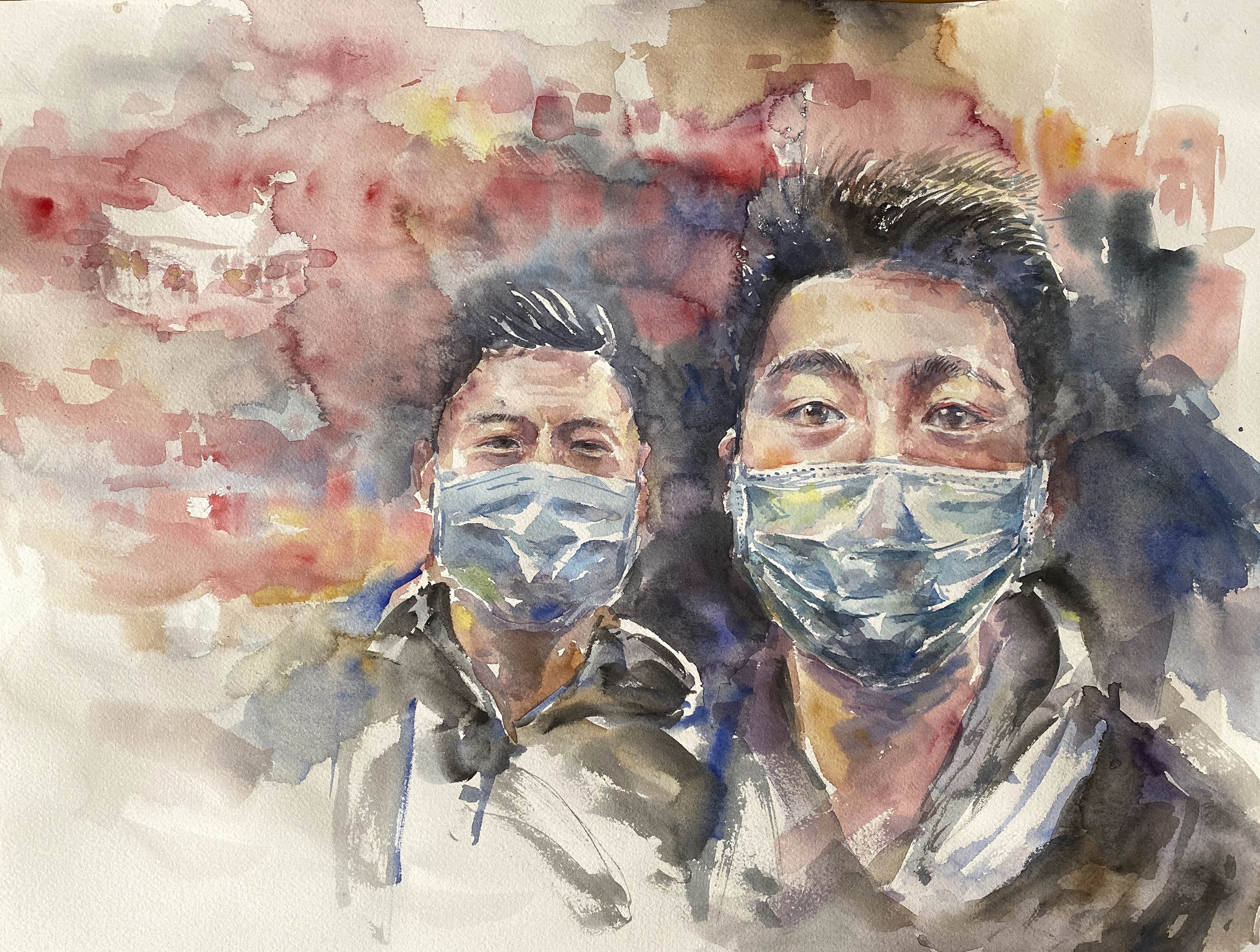
While The Wave “allows people to express their voices about their identities and race issues [in ways] that wouldn’t necessarily be as highlighted or as accepted at other publications,” said Zhou, the team didn’t want to impose a set of boundaries about those identities onto contributors.
“We don’t want to put a label on what Asian American art is, or what ‘Asian American’ needs to be wrangled into, or what students at Harvard should be thinking about,” said Li. “We tried our hardest to respect the artists’ visions and do justice to the voices on Harvard’s campus.”
At this year’s Virtual Visitas preorientation, The Wave hosted a magazine-making party on Zoom with prospective admitted students, one of whom submitted art to the Quaranzine following the event. They plan to release the second print issue of The Wave in the fall, with Zhou assisting as a newly minted alum.
“One of the things that literature, and a magazine like this, [can] do is bridge communities,” said Zhou. “The Wave is part of a larger campus conversation about how we’re going to express ourselves and our identities, both politically and culturally.”
“The enthusiasm that we’ve seen just proves that this space, these conversations, and the magazine, are needed on campus,” added Li. “We’re excited to be the shapers that move this into existence, but we’re also excited to see what people create in the future.”



